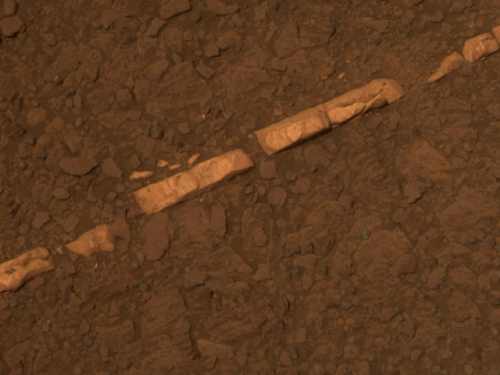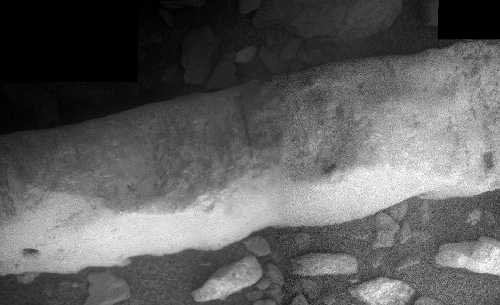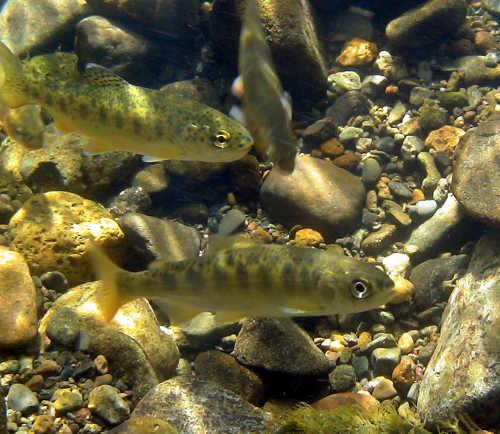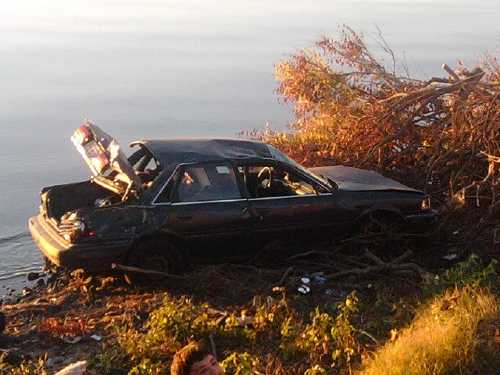
A feller-buncher operates cutting trees and gathering them together to move to a landing area in the Alder Springs project area on the Mendocino National Forest. The feller-buncher is one of several types of mechanical equipment that is frequently utilized to complete ecological restoration projects. Courtesy photo.
California’s landscapes are under siege from a host of threats – catastrophic wildfire, climate change, invasive species and increasing human population put these delicate ecosystems at risk.
The U.S. Forest Service has recognized and battled these threats for decades, but recently the agency recognized the need for a more focused approach on ecological restoration as the primary goal for all land management actions.
The goal is to retain and restore ecological resilience of the National Forest lands to achieve sustainable ecosystems that provide a broad range of services and value.
Ecologically healthy and resilient landscapes, rich in biodiversity, have greater capacity to adapt and thrive in the face of natural disturbances and large scale threats.
The Forest Service recognizes that it cannot achieve its goals alone.
“The emphasis will be placed on expanding and developing partnerships to increase organizational capacity and the use of large-scale stewardship contracts operating at the landscape level to achieve restoration goals,” said Pacific Southwest Regional Forester Randy Moore.
In Northern California, the Eldorado and Mendocino National Forests and the Lake Tahoe Basin have been working hard on various Ecological Restoration projects.
On the Eldorado National Forest, restoration activities continued this year in the Bassi Falls-Millionaire Camp area on the Pacific Ranger District.
In the past, vehicles drove across a web of user-created roads both on public and private lands to access Bassi Falls.
In 2002, the Pacific Ranger District coordinated with the adjacent land owner, Sierra Pacific Industries, to improve watershed conditions by closing user-created roads, blocking access and replanting denuded areas.
A nonmotorized hiking trail was constructed to allow access to Bassi Falls and a parking area was identified in the Millionaire Camp for access to a popular dispersed camping area along Big Silver Creek.
Shortly after the original restoration project, the private land in the area was acquired by the Forest Service through the Silver-Pearl land exchange.
Restoration efforts on this project have continued over the past several years with a focus on improving conditions on those lands acquired through the land exchange.
There are several areas where large amounts of soil have eroded away from motorized vehicle impacts, and are still eroding despite the removal of motorized vehicles. In addition, much of the hiking trail, which is made up of old user-created roads have poor drainage and erosion issues.
Current restoration activities include repairing hillsides that have old roads that are currently causing problems in various streams and rivers.
The work includes a variety of activities primarily to prevent water running down the middle of roads. In some cases, small dams will be constructed to catch sediment before it gets to streams and rivers.
Water quality problems will be resolved by removing some dirt roads and returning the hillside to a more natural state.
To do this, some roads will be plowed with heavy equipment so trees and other vegetation will grow where the road was located. We will also repair some streams in meadows that are eroding along the streamsides.
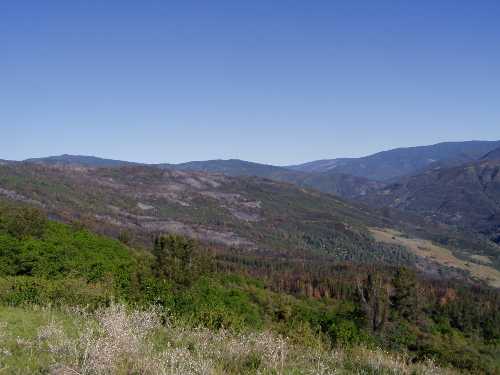
The Alder Springs area following a prescribed burn at Long Point on the Mendocino National Forest. Prescribed fire is an important tool for ecological restoration, reintroducing fire into the eco-system during precise weather conditions to safely reduce hazardous fuels, as well as returning nutrients to the soil and improving wildlife habitat. Courtesy photo.
The Mendocino National Forest has a variety of ecological restoration projects, including marijuana site restoration and fuels reduction.
Illegal marijuana cultivation not only poses a risk to public and employee safety, it also directly harms the environment.
The illegal use of pesticides can cause extensive long-term damage to natural resources. For example, the supply of public drinking water for hundreds of miles may be impacted due to one marijuana growing site.
Overall, the negative impact of marijuana sites on natural resources is severe. Human waste and trash are widespread, contamination from sites affects fish and wildlife habitats, and soil erosion is common.
In addition, water usage is extreme because each marijuana plant is estimated to require a gallon of water per day – water that is critical to native vegetation, wildlife and public drinking water sources.
“Reclaiming sites damaged by illegal marijuana cultivation is an important part of Ecological Restoration efforts,” said Mendocino National Forest Supervisor Lee Johnson. “All resources are touched by this activity – water, soils, wildlife and the overall health of the forest. Restoration efforts help not only the forest resources, but also benefit the public that uses the National Forest System lands for recreation, as well as for clean water and clean air.”
Another Ecological Restoration project on the Mendocino National Forest is the Alder Springs Fuel Reduction Project which was begun to thin the dense second-growth conifer stand that developed after a fire in the 1920s.
The intent was to improve forest health and reduce the risk of a stand-replacing fire in the future.
The Alder Springs project also included prescribed burning of adjacent non-conifer vegetation to expand the fuels reduction work and to maintain fire processes.
A carbon budget study was integrated into project implementation in partnership with Wheelabrator and Winrock International.
“The Alder Springs Project is an example of how Ecological Restoration has been essential to managing the resources on the Mendocino National Forest,” said Johnson. “Ecological Restoration on the Forest includes an integrated approach across all resources, utilizing opportunities on a broader landscape for better results, working with partners, finding opportunities for research for further understanding and development, and continuing the project through maintenance and developing a unified vision for future management.”
The Lake Tahoe Basin Management Unit recently completed the latest phase of tree thinning aimed at restoring the health of meadows, aspen groves and forest uplands near Big Meadow Creek.
Contract crews worked to thin conifers on 55 acres surrounding the popular Scotts Lake Trail, off Big Meadow Trailhead near Luther Pass on Highway 89.
In all, the Forest Service expects to treat about 640 acres, piling the material to burn later.
The tree-thinning is part of a larger project, the Big Meadow Creek Watershed Fire Regime Restoration, which will continue for several years.
Prior to the recent practice of actively suppressing fires, ground fires occurred naturally. The Washoe Tribe also deliberately used fire to encourage the growth of desired plant and tree species, such as willow and aspen, and attract the wildlife that depend on this vegetation. Without periodic fires that destroy conifer seedlings, the trees overtake aspen stands and meadows and can lead to forest die-off from insect infestation, drought or fire.
Once the initial thinning and pile burning are complete, the Forest Service will begin meadow burns that more closely simulate the natural role fire once played in the ecosystem.
“Thinning trees reduces competition for water, nutrients and sunlight, which helps meadow vegetation and aspens thrive and allows the remaining trees in forested area to grow larger,” said Forest Supervisor Nancy Gibson. “This work, funded through the Southern Nevada Public Land Management Act, will help to restore the Big Meadow ecosystem, providing important wildlife habitat and preserving one of our special places in the Lake Tahoe Basin.”
“Ecological Restoration crosses land boundaries and includes many different projects,” said Moore. “Ultimately we want to create landscapes that survive and thrive in a changing environment and provide goods, services and recreation opportunities now and for generations to come.”
Follow Lake County News on Twitter at http://twitter.com/LakeCoNews, on Tumblr at www.lakeconews.tumblr.com, on Google+, on Facebook at www.facebook.com/pages/Lake-County-News/143156775604?ref=mf and on YouTube at www.youtube.com/user/LakeCoNews .
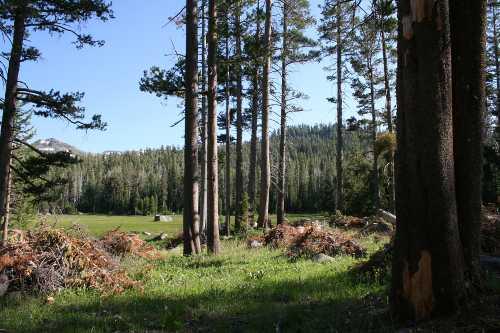
Big Meadow Creek Watershed Fire Regime Restoration area after the project. Courtesy photo.

